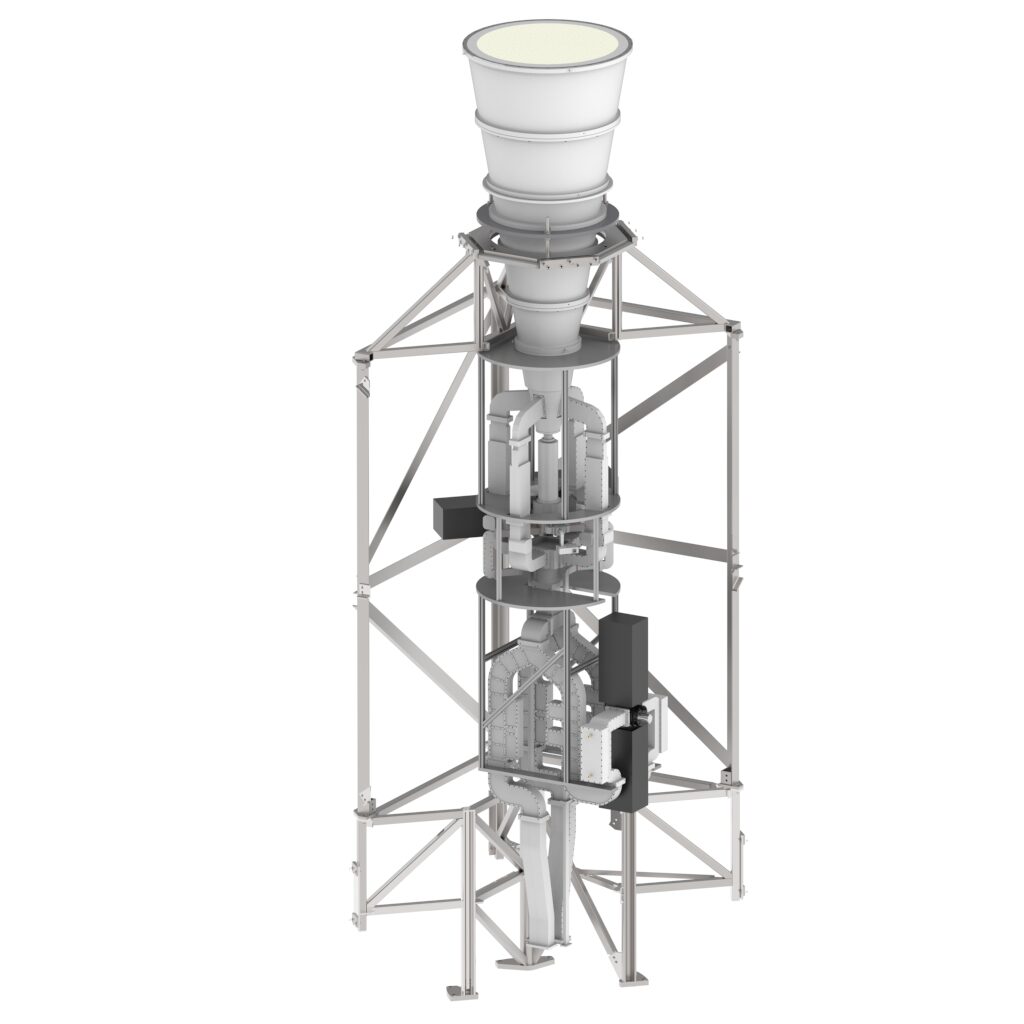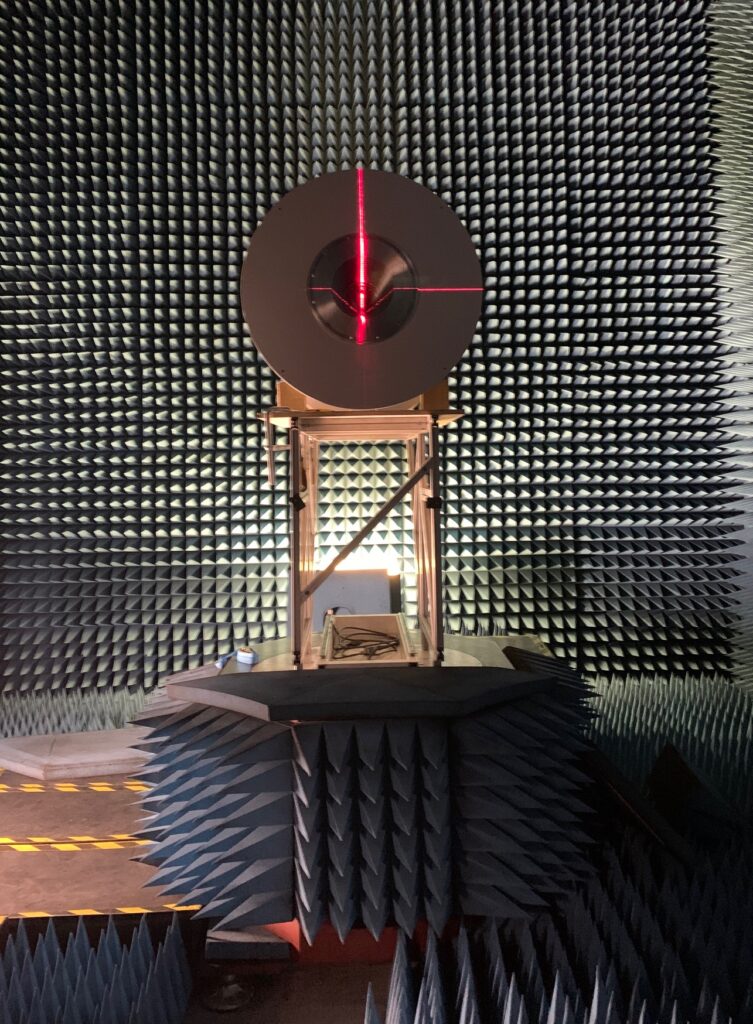Goonhilly Satellite Earth Station is a space station on the Lizard Peninsula in England. In July 2015, the European Space Agency began a feasibility study to determine options for upgrading Goonhilly’s 32-meter beam waveguide antenna, called Merlin (GHY-6), to support the Orion spacecraft Artemis 1.
In April 2018, Goonhilly became part of a collaborative partnership for commercial lunar missions to be interoperable with ESA and NASA antenna network services. This agreement included upgrading GHY-6 to a dual-band solution supporting S- and X-band frequencies to be used for the Lunar Pathfinder mission, which will send small landers to the lunar surface to communicate with the mother ship as a relay station to GHY-6.

In this context, MIRAD had been requested to support the project with a dual-band feed system to be integrated into the large BWG reflector system. The antenna refurbishment requieres a high gain horn with a relative small flare angle, resulting a mechanical massive design with a length of approx. 2.4m and a aperture diamter of approx. 1.0m. The final design of the feed including the horn has an overall length of around 5.6m. The system provides signal transmission and reception in S-band and in X-band, while X-band supports additionally TE21 monopuls tracking capability.
The figures illustrate first section of the S/X-band feed horn (left), the feed during measurements in MIRADs anechoic chamber (center) and the Goonhilly earth station antenna* where the feed is installed (right)
The final installation of the feed system in the antenna, in conjunction with the rest of the upgrade, enabled a UK station to communicate directly with deep space missions for the first time. GHY-6 is CCSDS compliant, allowing services to be provided to other space agencies. The 32-meter antenna was officially inaugurated on June 11, 2021.
Key technical challenges:
- Combination of two tracking frequency bands
- Integration of the TE21-mode monopulse tracking coupler
- High isolation between S- & X-band but also high innerband isolation Rx/Tx
- Extreme precise manufacturing and handling of mechanical large components
- S-band signal transmission
(Tx: 2.025 – 2.120 GHz, Rx: 2.200 – 2.300 GHz) - X-band signal transmission
(Tx: 7.145 – 7.235 GHz, Rx: 8.400 – 8.500 GHz) - Dual circular
- Tracking capability in X-band
- Insertion loss <0.4 dB in all bands
- Isolation >100 dB X-band, >120 dB S-band
- Axial Ration <0.8 dB S-band, <0.5 dB X-band



